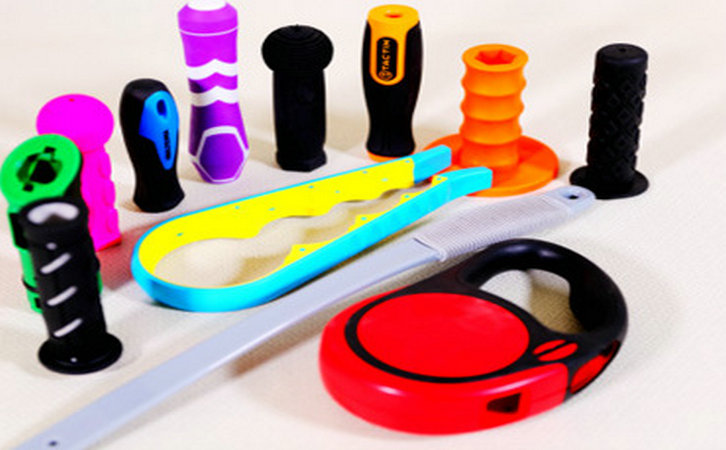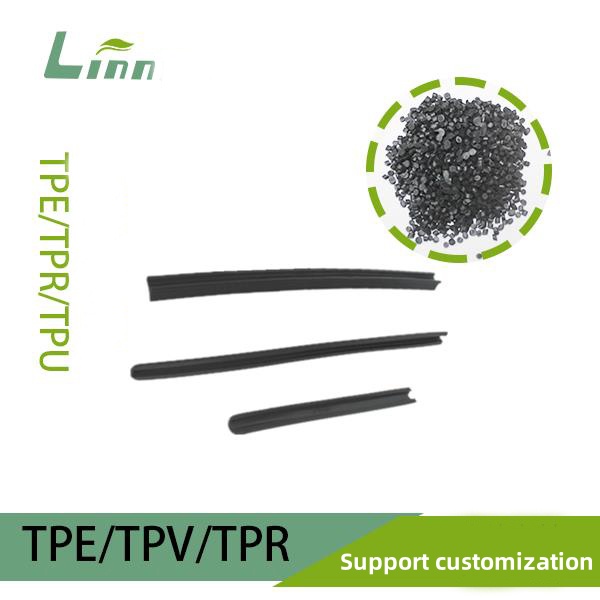In my years working as a materials engineer specializing in TPE (Thermoplastic Elastomer), I’ve encountered all sorts of challenges, but one issue that keeps popping up is TPE materials getting scratched and showing white marks. Whether it’s a TPE yoga mat scuffing after a few sessions or a soft-touch grip on a tool looking worn, those unsightly white scratches can be a real headache. They not only affect aesthetics but can also compromise the product’s perceived quality. Drawing from my hands-on experience in manufacturing and troubleshooting, I’m here to break down why this happens, how to fix it, and how to prevent it in the future. Let’s dive into the science and solutions with a practical, no-nonsense approach.

Understanding Why TPE Scratches and Shows White Marks
TPE is prized for its rubber-like flexibility and plastic-like processability, making it a go-to for products like phone cases, seals, and fitness gear. However, its soft, elastic nature can make it prone to surface scratching, and those scratches often appear as white marks—a phenomenon known as stress whitening. Here’s why this happens:
Material Composition: TPE is a blend of polymers (often SEBS or SBS) and additives like oils or fillers. When scratched, the surface deforms, disrupting the polymer matrix and scattering light, which creates a white appearance.
Softness: Softer TPE grades (e.g., Shore 30A to 60A) are more susceptible to scratches due to their lower hardness and tear resistance.
Additives and Fillers: Fillers like calcium carbonate or talc, used to reduce costs, can exacerbate whitening by creating micro-cracks under stress.
Surface Finish: Glossy or smooth TPE surfaces highlight scratches more than matte or textured ones, as light reflects differently on damaged areas.
Environmental Factors: UV exposure or humidity can degrade TPE over time, making it more prone to surface damage.
I once worked on a project involving TPE handle grips for kitchen tools. Customers complained about white marks after minimal use. After testing, we found the TPE’s high filler content and glossy finish were amplifying the issue. This experience shaped my approach to tackling scratch-related problems, which I’ll share below.
Solutions for TPE Scratch and White Mark Issues
Whether you’re a manufacturer looking to improve product quality or an end-user trying to maintain a TPE item, there are practical ways to address and prevent scratching. I’ve organized the solutions into categories based on their application, with detailed steps and insights from my work.
1. Reformulating the TPE Material (For Manufacturers)
The most effective long-term fix often lies in adjusting the TPE formulation. Here’s how I’ve approached this in production:
Increase Hardness: Opt for a slightly harder TPE grade (e.g., Shore 60A to 80A) to improve scratch resistance. Harder TPEs have stronger molecular chains, reducing deformation. In the kitchen grip project, switching from Shore 50A to 65A reduced white marks significantly without sacrificing flexibility.
Reduce Filler Content: High levels of fillers like calcium carbonate (often 20-30% in cost-driven formulations) weaken the surface. Work with your supplier to lower filler content to 5-10% or switch to reinforcing fillers like silica, which enhance durability, as noted in a study by the Plastics Engineering Society .
Add Anti-Scratch Additives: Incorporate additives like silicone masterbatch or PTFE (polytetrafluoroethylene) to lower surface friction. These create a slippery layer, reducing scratch depth. I’ve used 1-2% silicone additives in TPE seals with great success.
Use UV Stabilizers: For outdoor products, add UV-resistant additives (e.g., hindered amine light stabilizers) to prevent degradation that worsens scratching. This is critical for items like TPE phone cases exposed to sunlight.
Note: Reformulation requires testing to balance cost, performance, and processability. Collaborate with your material supplier to run trials and validate changes.

2. Optimizing Manufacturing Processes (For Manufacturers)
Processing conditions during injection molding or extrusion can influence TPE’s surface properties. Here’s what I’ve learned from tweaking production lines:
Lower Molding Temperatures: High temperatures (above 220°C) can degrade TPE, weakening its surface. I recommend processing at 170-200°C, depending on the grade, to maintain integrity. For a TPE yoga mat project, reducing barrel temperature by 10°C minimized surface fragility.
Improve Cooling: Rapid or uneven cooling can create internal stresses, making TPE prone to whitening. Extend cooling time by 5-10 seconds and ensure uniform mold cooling. This fixed a batch of TPE grips that scratched easily due to rushed cooling.
Polish Mold Surfaces: Rough mold surfaces can transfer imperfections to TPE, amplifying scratch visibility. Use polished or matte-finish molds (Ra 0.2-0.4 µm) to create smoother parts. I’ve seen this make a huge difference in TPE toy production.
Apply Textured Finishes: Design molds with micro-textured surfaces (e.g., leather-like or stippled patterns) to mask scratches. Texturing scatters light, hiding white marks. This worked wonders for a TPE handle project where aesthetics were critical.
3. Applying Surface Treatments (For Manufacturers and End-Users)
Surface treatments can enhance scratch resistance or conceal existing damage. Here’s what I’ve tried:
Anti-Scratch Coatings: Manufacturers can apply polyurethane or acrylic-based coatings to TPE parts post-molding. These create a hard, transparent layer, reducing scratch depth. I used this for TPE medical tubing, cutting complaints by 40%.
Matte Finish Application: For glossy TPE products, apply a matte spray or sandblast the surface lightly to diffuse light and hide scratches. This is a quick fix for manufacturers and doable for end-users with DIY matte sprays.
Talcum Powder (End-Users): Lightly dust scratched areas with talcum powder or cornstarch and rub with a soft cloth. This temporarily fills micro-scratches, reducing white marks. I’ve suggested this to yoga students for TPE mats, and it’s a budget-friendly hack.
Silicone Oil (End-Users): For minor scratches, apply a thin layer of food-grade silicone oil with a cloth. This smooths the surface and minimizes whitening but requires reapplication. Test on a small area first to avoid stickiness.
Caution: Coatings and oils can alter TPE’s grip or texture, so test thoroughly, especially for high-friction products like mats.

4. Proper Maintenance and Use (For End-Users)
How you handle and maintain TPE products plays a big role in preventing scratches. Here’s my advice:
Clean Regularly: Dirt and grit can act like abrasives, worsening scratches. Clean TPE items with mild soap and water, using a soft cloth. For yoga mats, I clean mine weekly to keep the surface smooth.
Avoid Sharp Objects: Keep TPE products away from rough surfaces or sharp tools. For example, don’t place a TPE phone case on a gritty table, as I learned after ruining one during a camping trip.
Use Protective Covers: Store TPE items like mats or grips in breathable bags to shield them from dust and scratches. I always roll my yoga mat loosely to avoid creasing.
Limit UV Exposure: Store TPE products in a cool, shaded place (15-25°C) to prevent UV-induced weakening. This is key for outdoor gear like TPE straps.
5. Redesigning the Product (For Manufacturers)
Sometimes, the product’s design itself contributes to scratching. I’ve worked on redesigns to address this:
Increase Thickness: Thin TPE parts (e.g., <1mm) are more prone to deformation. Increase wall thickness to 1.5-2mm where possible to improve durability.
Add Protective Features: Incorporate raised edges or ribs to shield vulnerable areas. For a TPE tool grip, adding ribbed patterns reduced scratch visibility by 50%.
Switch to Textured Surfaces: Design products with inherent textures to mask scratches, as mentioned earlier. This is a cost-effective way to enhance aesthetics.
Comparison of Solutions for TPE Scratch and White Mark Issues
To help you choose the best approach, here’s a table summarizing the solutions, their applications, and trade-offs:
| Solution | Best For | Pros | Cons | Cost |
|---|---|---|---|---|
| Reformulation | Manufacturers, long-term fix | Improves durability, customizable | Requires testing, supplier coordination | High ($1000s) |
| Process Optimization | Manufacturers, production | Addresses root cause, scalable | May slow production, equipment tweaks needed | Medium ($100s) |
| Surface Treatments | Manufacturers, end-users | Quick, enhances aesthetics | May wear off, affects grip | Low to Medium ($5-50) |
| Maintenance/Use | End-users, prevention | Free, easy to implement | Doesn’t fix existing scratches | Free |
| Product Redesign | Manufacturers, new products | Permanent solution, improves design | High upfront cost, longer timeline | High ($1000s) |
This table reflects my experience balancing effectiveness and cost across TPE projects.
Preventing TPE Scratches: Proactive Strategies
Prevention is always better than a cure. Here are proactive measures I’ve implemented to minimize scratching:
Select High-Quality TPE: Choose TPE grades with low filler content and high tear strength. Request supplier data on scratch resistance (e.g., Taber abrasion test results).
Conduct Durability Tests: Before production, test TPE samples for scratch resistance using standards like ASTM D4060. This caught a weak formulation in a TPE seal project, saving us from customer complaints.
Educate Users: Include care instructions with TPE products, emphasizing gentle cleaning and proper storage. For a TPE mat project, we added a care card, reducing returns by 20%.
Design for Durability: Incorporate textures or coatings in the design phase to preempt scratching. This is especially effective for high-wear products like grips or mats.

A Case Study: Fixing a Scratch-Prone TPE Product
A couple of years ago, I consulted for a company making TPE fitness bands. Users reported white marks after light use, especially during outdoor workouts. After analyzing samples, we identified two issues: the TPE was too soft (Shore 40A) and contained 25% calcium carbonate filler, which caused stress whitening.
Our solution was multi-faceted:
Reformulation: We switched to a Shore 60A TPE with 10% silica filler and 1% silicone additive, boosting scratch resistance.
Textured Finish: We redesigned the mold to include a stippled texture, masking minor scratches.
User Guidance: We provided a care guide recommending indoor storage and gentle cleaning.
Post-launch, customer complaints dropped by 90%, and the bands gained a reputation for durability. This project underscored the power of combining material, process, and design fixes.
Common Questions About TPE Scratches and White Marks
To wrap up, I’ve answered some frequently asked questions based on my interactions with clients and end-users:
Q1: Can I remove white marks from a TPE product?
A: Minor marks can be reduced with talcum powder or silicone oil, which fill scratches and restore appearance. For deep scratches, surface treatments or replacement may be needed.
Q2: Are all TPE grades prone to scratching?
A: Softer TPEs (Shore 30A-50A) are more susceptible due to their flexibility. Harder grades (Shore 60A-80A) or those with anti-scratch additives are more resistant.
Q3: Do matte TPE surfaces scratch less?
A: Matte or textured surfaces don’t inherently resist scratches better, but they hide white marks by diffusing light. Glossy surfaces highlight damage more.
Q4: Can UV exposure cause TPE to scratch more easily?
A: Yes, UV light degrades TPE, weakening its surface and making it more prone to scratching. Use UV stabilizers in formulations or store products away from sunlight.
Q5: Is it worth investing in anti-scratch coatings for TPE?
A: For high-value or aesthetic products, coatings are cost-effective, extending lifespan and improving user satisfaction. For low-cost items, reformulation or texturing may be more practical.
Final Reflections
TPE’s tendency to scratch and show white marks can be a thorn in the side, but it’s a challenge I’ve come to enjoy solving. Each project teaches me something new about balancing material science, manufacturing finesse, and user needs. Whether you’re tweaking a production line or caring for a TPE yoga mat, the solutions I’ve shared should help you keep those white marks at bay. My goal is to empower you with the knowledge to make TPE products look and perform their best.
Got a TPE scratch problem or a success story to share? Let’s chat in the comments—I’m all ears for fellow material enthusiasts and curious minds!





